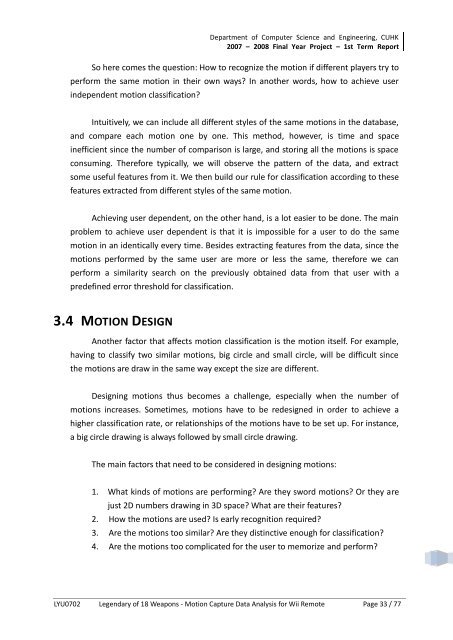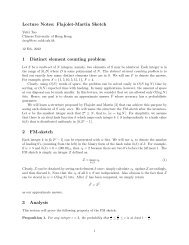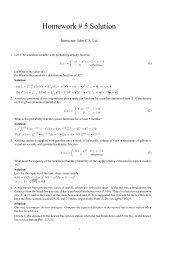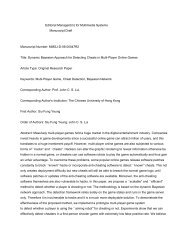2008 Final Year Project – 1st Term Report - The Chinese University ...
2008 Final Year Project – 1st Term Report - The Chinese University ...
2008 Final Year Project – 1st Term Report - The Chinese University ...
Create successful ePaper yourself
Turn your PDF publications into a flip-book with our unique Google optimized e-Paper software.
Department of Computer Science and Engineering, CUHK<br />
2007 <strong>–</strong> <strong>2008</strong> <strong>Final</strong> <strong>Year</strong> <strong>Project</strong> <strong>–</strong> <strong>1st</strong> <strong>Term</strong> <strong>Report</strong><br />
So here comes the question: How to recognize the motion if different players try to<br />
perform the same motion in their own ways? In another words, how to achieve user<br />
independent motion classification?<br />
Intuitively, we can include all different styles of the same motions in the database,<br />
and compare each motion one by one. This method, however, is time and space<br />
inefficient since the number of comparison is large, and storing all the motions is space<br />
consuming. <strong>The</strong>refore typically, we will observe the pattern of the data, and extract<br />
some useful features from it. We then build our rule for classification according to these<br />
features extracted from different styles of the same motion.<br />
Achieving user dependent, on the other hand, is a lot easier to be done. <strong>The</strong> main<br />
problem to achieve user dependent is that it is impossible for a user to do the same<br />
motion in an identically every time. Besides extracting features from the data, since the<br />
motions performed by the same user are more or less the same, therefore we can<br />
perform a similarity search on the previously obtained data from that user with a<br />
predefined error threshold for classification.<br />
3.4 MOTION DESIGN<br />
Another factor that affects motion classification is the motion itself. For example,<br />
having to classify two similar motions, big circle and small circle, will be difficult since<br />
the motions are draw in the same way except the size are different.<br />
Designing motions thus becomes a challenge, especially when the number of<br />
motions increases. Sometimes, motions have to be redesigned in order to achieve a<br />
higher classification rate, or relationships of the motions have to be set up. For instance,<br />
a big circle drawing is always followed by small circle drawing.<br />
<strong>The</strong> main factors that need to be considered in designing motions:<br />
1. What kinds of motions are performing? Are they sword motions? Or they are<br />
just 2D numbers drawing in 3D space? What are their features?<br />
2. How the motions are used? Is early recognition required?<br />
3. Are the motions too similar? Are they distinctive enough for classification?<br />
4. Are the motions too complicated for the user to memorize and perform?<br />
LYU0702 Legendary of 18 Weapons - Motion Capture Data Analysis for Wii Remote Page 33 / 77






